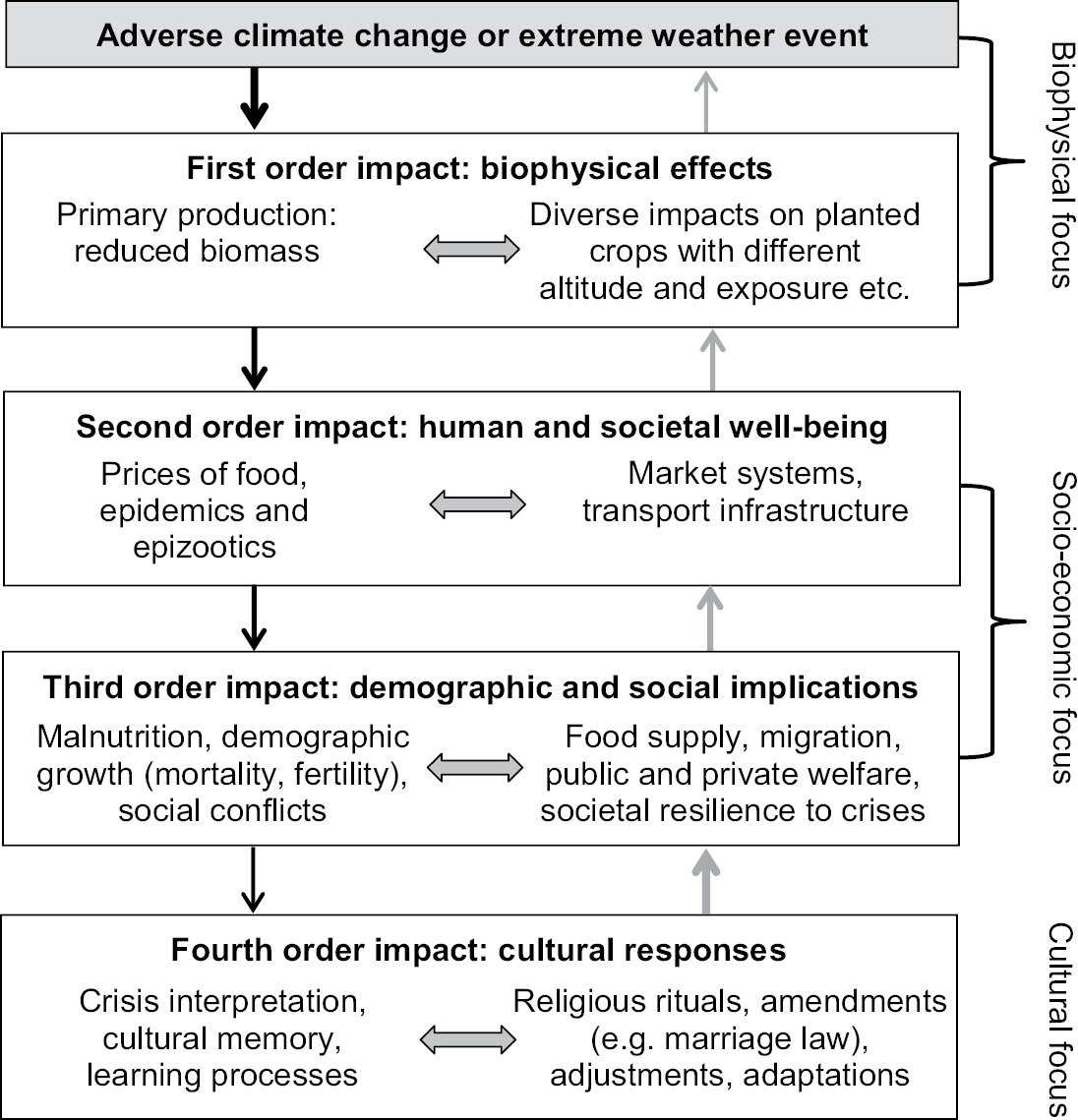Relevance: Sociology: Challenges of Social Transformation: Crisis of development: displacement, environmental problems and sustainability. Poverty, deprivation and inequalities.
As a society, we have structured our day-to-day lives around historical and current climate conditions. We are accustomed to a normal range of conditions and may be sensitive to extremes that fall outside of this range.
Climate change could affect our society through impacts on a number of different social, cultural, and natural resources. For example, climate change could affect human health, infrastructure, and transportation systems, as well as energy, food, and water supplies.
Some groups of people will likely face greater challenges than others. Climate change may especially impact people who live in areas that are vulnerable to coastal storms, drought, and sea level rise or people who live in poverty, older adults, and immigrant communities.
Similarly, some types of professions and industries may face considerable challenges from climate change. Professions that are closely linked to weather and climate, such as outdoor tourism, commerce, and agriculture, will likely be especially affected.

Impacts on Vulnerability and Equity
Projected climate change will affect certain groups of people more than others, depending on where they live and their ability to cope with different climate hazards. In some cases, the impacts of climate change are expected to worsen existing vulnerabilities.
Geographic Location
Where people live influences their vulnerability to climate change.
- Over the past four decades, population has grown rapidly in coastal areas and in the southern and western regions of the United States. These areas are most sensitive to coastal storms, drought, air pollution, and heat waves.
- Populations in the Mountain West will likely face water shortages and increased wildfires in the future.
- Arctic residents will likely experience problems caused by thawing permafrost and reduced sea ice.
- Along the coasts and across the western United States, both increasing population and changes in climate place growing demands on transportation, water, and energy infrastructure.
Ability to Cope
- Different groups have different abilities to cope with climate change impacts.
- People who live in poverty may have a difficult time coping with changes. These people have limited financial resources to cope with heat, relocate or evacuate, or respond to increases in the cost of food.
- Older adults may be among the least able to cope with impacts of climate change.
- Young children are another sensitive age group, since their immune system and other bodily systems are still developing and they rely on others to care for them in disaster situations.
- To find out more about climate change and health, please visit the Health Impacts & Adaptation page.
Indigenous Peoples
- Indigenous communities and tribes are diverse and span the United States. While each community and tribe is unique, many share characteristics that can affect their ability to prepare for, respond to, and cope with the impacts of climate change. These include:
- living in rural areas or places most affected by climate change (like communities along the coast)
- relying on surrounding environment and natural resources for food, cultural practices, and income.
- coping with higher levels of existing health risks when compared to other groups
- having high rates of uninsured individuals, who have difficulty accessing quality health care
- living in isolated or low income communities
- Climate change can impact the health and well-being of indigenous tribes in many ways. Climate change will make it harder for tribes to access safe and nutritious food, including traditional foods important to many tribes’ cultural practices. Many tribes already lack access to safe drinking water and wastewater treatment in their communities. Climate change is expected to increase health risks associated with water quality problems like contamination and may reduce availability of water, particularly during droughts.
- By affecting the environment and natural resources of tribal communities, climate change also threatens the cultural identities of Indigenous people. As plants and animals used in traditional practices or sacred ceremonies become less available, tribal culture and ways of life can be greatly affected. Learn more about climate change and the health of indigenous populations.
Urban Populations
- City residents and urban infrastructure have distinct sensitivities to climate change impacts. For example, heat waves may be amplified in cities because cities absorb more heat during the day than suburban and rural areas.
- Cities are more densely populated than suburban or rural areas. Higher temperatures and more extreme events will likely affect the cost of energy air and water quality, and human comfort and health in cities.
- City dwellers may also be particularly susceptible to vulnerabilities in aging infrastructure. This includes drainage and sewer systems, flood and storm protection assets, transportation systems, and power supply during periods of peak demand, which typically occur during summer heat waves.

